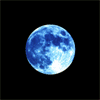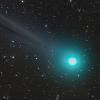On the Moon and planets, a yellow filter will also increase contrast.
A nice, and successful, $13 experiment, it seems.
You will want to remove it on DSOs, however, since it subtracts 17% of the light (83% transmission).
When I was using #8 LY and the 495 Longpass filters with my Vixen 140NA refractor I kept them on the star diagonal all the time - including for deep sky observations. While they remove light there are several things that mitigate the impact this light reduction has on the view.
1. The light removed is mostly in the portion of the visible spectrum that is not focused into the image because it is blurred out of the image.
2. With the filter it is possible to get noticeably sharper images.
3. The filter clears out a background scatter of contrast robbing defocused light across the sky background.
In my experience the combination of these three factors actually means it is possible to see more detail, not less when using filters like the #8 LY or the 495 Longpass with an achromat. I never found that with the filters there was significant dimming of the image. In all cases I found that deep sky objects revealed more details with the filters than without.
For dense open and globular star clusters the difference at higher magnifications is very obvious. The filter sharpens up the star images which means more stars can actually be cleanly resolved into pinpoint stars. Without the filter many of the fainter stars are too blurred to detect. In numerous starfields I routinely observe - after using the filter - I noticed additional stars with the filter that I had not noticed without the filter.
Even nebula can benefit from the filters. I found with the filter I was able to pick out more fine details once I started using the filter.
Due to all these benefits I kept a 2" filter on my star diagonal at all times when I was using an achromat. Since switching to the SW120ED I haven't had to worry about a CA filter, but I hang onto the Baader 495 LP. The SW120 is a great scope to test how much dimming the filters actually dim DSO because it focuses all the light into the airy disk. Therefore all the light removed by the filter actually was in the image - unlike the situation with an achromat.
Achromat's I used the filters with include the SV809D (80mm f/9.4), ST80, and the Vixen 140NA. Obviously the impact was most dramatic with the Vixen 140, but the filters were beneficial with all of these scopes.























